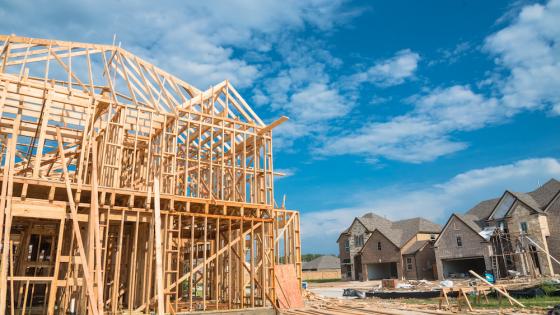A growing body of research has examined the housing boom-bust cycle, highlighting how housing market dynamics can heighten financial stability risks and how corrections can leave long-lasting economic scars (Claessens et al. 2009, Mian et al. 2013, Mian and Sufi 2014, Cerutti et al. 2017). The empirical evidence suggests that house price corrections are particularly damaging when preceded by rapid credit expansions – so-called credit booms (Claessens et al. 2009, Jordà et al. 2015, Dell’Ariccia et al. 2016, Cerutti et al. 2017, Albuquerque and Krustev 2018).
In a new paper (Albuquerque et al. 2025a), we construct a long-term global macrofinancial dataset of 68 countries from 1970Q1 to 2023Q4 – 35 advanced economies (AEs) and 33 emerging markets and developing economies (EMDEs) – to document housing cycles around the world. Specifically, we introduce a novel framework to classify housing market phases – distinguishing between contractions and expansions, which we divide into non-boom expansions and booms.
Our main findings show that economic downturns tend to be deeper and more prolonged when housing contractions follow a housing boom, characterised by rapid and persistent house price increases. While housing booms boost house prices, GDP growth, and consumption during expansions, their net impact across the cycle is negative. Notably, housing-driven downturns lead to sharp economic contractions, diverging from the steady growth seen in non-boom periods.
The silver lining is that housing boom-bust cycles may not be inevitable. Countries with more elastic housing supply tend to experience milder economic downturns following a housing contraction. This implies that easing land-use regulations and fostering a business environment that supports housing construction could help cushion the macroeconomic impact of housing downturns. Moreover, borrower-based measures can also reduce the risk of severe economic contractions after a housing boom.
Not all housing cycles are alike
We identify housing cycles – ‘expansions’ and ‘contractions’ – using the Harding and Pagan (2002) BBQ algorithm to detect turning points, with parameters calibrated to capture relatively long financial cycles. Furthermore, within expansion phases, we identify housing booms defined as periods of sustained, rapid house price growth that exceed country-specific thresholds, building on Cerutti et al. (2017). The housing market is classified as a housing boom when two conditions are met:
- Intensity: Year-on-year real house price growth must exceed either 5% or the country-specific average growth plus two standard deviations in a given quarter.
- Persistence: Growth must remain above 5% or the country-specific average plus one standard deviation for at least six consecutive quarters.
By combining housing cycles and booms, we document key housing market dynamics (Figure 1). We identify 180 housing expansions, with 49% including housing booms. Before the Global Financial Crisis (GFC), more than 40% of the countries experienced housing booms, but the share declined sharply after that period. During the post-pandemic period, many AEs experienced renewed housing booms, often emerging from preceding expansions, before facing synchronised contractions.
Figure 1 Global housing market dynamics
Notes: The panels show the share of countries in the different phases of the housing market, as identified by the BBQ and boom algorithm.
Predictable pattern of the economy through the housing cycle
Using local projections, we analyse the real economy’s trajectory during housing expansions, distinguishing between non-boom and boom phases. We show that housing booms boost GDP and private consumption growth relative to non-boom housing expansions (Figure 2). By design, real house prices rise significantly more during booms, around eight percentage points higher after 12 quarters, yet housing supply, measured by building permits, remains largely unchanged. This suggests that housing booms drive price surges rather than increased supply. In our paper, we also do not find that the faster increase in house prices during housing booms translates into higher household disposable income, employment growth, or residential investment. These findings stress the potential negative spillovers of housing booms, primarily due to resource misallocation, aligning with evidence from the US and China, which suggests that housing booms can adversely affect nonfinancial firms' investment (Chakraborty et al. 2018, Hau and Ouyang 2024).
Figure 2 Housing booms versus non-boom housing expansions
Notes: Cumulative impulse responses of selected variables over 12 quarters during non-boom housing expansions (blue line and grey area) and housing booms (red lines). The grey area and dashed red lines refer to the respective 90% confidence bands. Standard errors double-clustered by country and time.
When focusing on housing market contractions, we find that economic downturns are significantly deeper and more prolonged when preceded by a housing boom (Figure 3). GDP, private consumption, and investment decline more sharply during these contractions, and the drop in house prices and housing supply (building permits) is more pronounced. However, we find similar statistical responses in private credit. The post-boom contraction in housing supply – unlike in non-boom expansions – aligns with research showing that declining housing supply elasticities over recent decades have made house prices, rather than quantities, the main driver of housing cycles, amplifying economic instability (Aastveit et al. 2020, Albuquerque et al. 2020, 2025b). This pattern also mirrors the role of the US housing bust in deepening the economic downturn during the GFC (Mian et al. 2013, Mian and Sufi 2014).
Figure 3 Conditional pattern of selected variables following a housing expansion peak
Notes: Cumulative impulse responses of selected variables over 12 quarters following housing expansion peaks that coincide with housing booms (red lines) against expansion peaks that do not coincide with housing booms (blue line and grey area). The grey area and dashed red lines refer to the respective 90% confidence bands. Standard errors double-clustered by country and time.
Our analysis shows that both the presence and intensity of a preceding boom shape the impact of housing contractions on the real economy. Stronger booms – measured by cumulative house price growth – make economic recovery more difficult once they end. A key driver of these nonlinear effects appears to be credit dynamics. We confirm that when housing booms coincide with household credit booms, the downturn is even more severe. Overall, our findings reinforce the importance of household balance sheets and resource misallocation in driving long-term economic scarring after housing boom-bust cycles, which is in line with the literature on the long -term impact of recessions (Blanchard et al. 2015, Cerra et al. 2023).
Net effect of housing expansions
On balance, we find that the costs of housing booms might outweigh the benefits. While housing expansions can support growth, our findings show that those accompanied by booms – where house prices surge well above country-specific norms – lead on average to lower medium-term economic growth (Figure 4). After a boom, economic activity declines sharply, diverging from the typical growth seen in non-boom periods. Importantly, not all prolonged house price increases relative to income signal weaker future growth
Figure 4 Conditional pattern of selected variables following housing innovations: housing booms versus non-boom housing expansions
Notes: Cumulative impulse responses of selected variables over 28 quarters following a one-standard deviation increase in housing innovations, measured with the 12-quarter change HPI, for non-boom housing expansions (blue line and grey area) and housing booms (red lines). The grey area and dashed red lines refer to the respective 90% confidence bands. Standard errors double-clustered by country and time.
Mitigating the effects of housing contractions
Our research suggests two key levers to mitigate the economic pain associated with housing contractions (Albuquerque et al. 2025a). First, easing land-use regulations and fostering a business environment that encourages housing construction can help cushion the macroeconomic effects of a downturn. Second, strengthening macroprudential policies – such as tighter borrower-based measures that limit loan-to-value (LTV) or debt service-to-income (DSTI) ratios – can reduce the likelihood of a severe economic contraction following a housing boom. However, further research is needed to better understand the transmission channels and determine the optimal timing for implementing these policies.
Authors’ note: The views expressed in this column represent only our own and should therefore not be reported as representing the views of the International Monetary Fund, its Executive Board, or IMF management.
References
Aastveit, K A, B Albuquerque and A Anundsen (2020), “The declining elasticity of US housing supply”, VoxEU.org, 23 June.
Albuquerque, B, E Cerutti, Y Kido and R Varghese (2025a), “Not all Housing Cycles are Created Equal: Macroeconomic Consequences of Housing Booms”, IMF Working Paper WP/25/50.
Albuquerque, B, M Iseringhausen and F Opitz (2020), “Monetary policy and US housing expansions: What we can expect for the post-COVID-19 housing recovery”, VoxEU.org, 23 June.
Albuquerque, B, M Iseringhausen and F Opitz (2025b), “The housing supply channel of monetary policy’, International Journal of Central Banking, forthcoming.
Albuquerque, B and G Krustev (2018), “Debt Overhang and Deleveraging in the US Household Sector: Gauging the Impact on Consumption”, Review of Income and Wealth 64(2): 459–481.
Blanchard, O, E Cerutti and L Summers (2015), “Inflation and Activity – Two Explorations and their Monetary Policy Implications”, NBER Working Paper 21726.
Cerra, V, A Fatas and S Saxena (2023), “Hysteresis and Business Cycles”, Journal of Economic Literature 61(1): 181–225.
Cerutti, E, J Dagher and G Dell’Ariccia (2017), “Housing finance and real-estate booms: A cross-country perspective”, Journal of Housing Economics 38(C): 1–13.
Chakraborty, I, I Goldstein and A MacKinlay (2018), “Housing Price Booms and Crowding-Out Effects in Bank Lending”, The Review of Financial Studies 31(7): 2806–2853.
Claessens, S, M A Kose and M Terrones (2009), “A recovery without credit: Possible, but…”, VoxEU.org, 22 May.
Dell’Ariccia, G, D Igan, L Laeven and H Tong (2016), “Credit booms and macrofinancial stability”, Economic Policy 31(86): 299–355.
Harding, D and A Pagan (2002), “Dissecting the cycle: a methodological investigation”, Journal of Monetary Economics 49(2): 365–381.
Hau, H and D Ouyang (2024), “Can real estate booms hurt firms? evidence on investment Substitution”, Journal of Urban Economics 144, 103695.
Jordà, O, M Schularick and A M Taylor (2015), “Leveraged bubbles”, VoxEU.org, 1 September.
Mian, A, K Rao and A Sufi (2013), “Household Balance Sheets, Consumption, and the Economic Slump”, The Quarterly Journal of Economics 128(4): 1687–1726.
Mian, A and A Sufi (2014), “House Price Gains and U.S. Household Spending from 2002 to 2006”, NBER Working Paper 20152.










